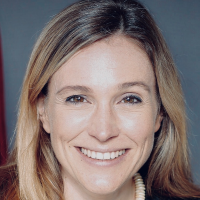Are the 'Best Practices' All Wrong for Your Family Business?

The best processes and systems come not from outside advisers and experts, but from how families actually live, relate to one another, and make decisions.
Family businesses are more than economic engines. They are rooted in family legacy and carry the weight of continuity. But behind the impressive numbers are families quietly struggling to stay connected while evolving. One of their biggest challenges is choosing the right governance models – formal rules, processes, and systems – to keep the company focused as it grows and as new generations become involved.
We learned this over our five years of field research, when we met with more than 100 members of Brazilian business families—not just in boardrooms, but in kitchens, on farms, and in offices lined with family photos and fading portraits of founders. These weren’t just interviews. They were intimate conversations—filled with pride, complexity, and vulnerability. We didn’t just learn how families manage businesses: We listened to how they wrestle with identity, trust, and power as they grow across generations.
Many told us they didn’t know where to begin with governance. The models they’d seen—prescribed by books, advisors, or successful legacy families—felt distant from their lived realities.
We learned that there’s no “right” way to govern, and no formal model that guarantees success. In truth, those models often fail when they don’t fit. One founder shared how his well-designed succession plan collapsed—not for lack of structure, but because it didn’t meet him where he was emotionally. Stepping down meant losing his identity. The advisors had the perfect tools, but not the ability to meet him where he was. Without psychological safety, there was no letting go—no real transition, and no room for the business to grow.
This is the deeper work we explore in this article—not how to “do” governance, but how to make it fit. We learned through our field work that governance didn’t fail because families lacked commitment. It failed because “best practices” developed by outside experts clashed with how families actually live, relate, and decide. Through the lens of Brazilian family firms—where governance often unfolds informally, in the quiet spaces of trust, emotion, faith, and reverence—we offer a different starting point. It’s rooted in the recognition that governance begins with what already exists. While our research was conducted in Brazil, where approximately 75% of the businesses are family-run, the insights that sprang from it can be helpful for family firms around the world.
What follows is an invitation: to notice the unspoken, to negotiate between instinct and structure, and to honor the people—often women, elders, or siblings—who have long carried the weight of cohesion, even without a title. Governance that lasts doesn’t begin with a charter: It begins with fit. And fit, we believe, grows from within.
Begin With What’s Already There
In Brazil, we came to see that governance often lives in the unspoken. It’s not a policy tucked in a binder—it’s a shared glance, a quiet ritual, a story passed down over coffee. Again and again, we witnessed families already practicing governance—just not always in ways that appear on paper. These informal systems aren’t gaps to be corrected. They are, as in many family businesses around the world, the scaffolding of trust that holds continuity in place. And yet, as families grow in size and complexity, formal structures do become necessary.
Our research show us that governance endures when it’s not imposed over these informal systems but grown out of them. When structure reflects, rather than replaces, the emotional logic already at work, it tends to last. This is where many families encounter a more subtle kind of friction. Advisers, peers, and books proclaim that good governance starts with documents and ends with protocols; that the right system will fix succession, clean up conflict, professionalize the business. The pressure to conform to best practices can be immense.
Too often, families step into these frameworks hoping to resolve familiar tensions—unclear roles, stalled transitions, generational gaps—only to find themselves caught in systems that generate more resistance than relief. Quite often, governance fails not because the tools are wrong, but because the timing, tone, and fit are off. What looks universal is rarely neutral—it carries assumptions that may not align with how a family actually lives, communicates, and decides.
As one second-generation leader told us after unsuccessful attempts:
“We don’t want governance to feel like an outside construct. We want it to grow from who we are, and it is hard to find the right people to work with us on that.”
That sentiment echoed throughout our field work. Families weren’t resistant to structure—they were resistant to structures that asked them to become someone else. Many had tried to implement formal models—constitutions, voting mechanisms, independent boards—only to find them hollow without cultural and relational alignment.
This is especially true in Brazil, where informality isn’t just tolerated; it’s part of the social fabric. In many families, roles blend with relationships. Elders are revered but not always titled. Decisions are made through conversations, not votes. Even when the desire for structure is present, the cultural pull toward connection over separation, presence over policy, can make formalization difficult to sustain.
And yet, rather than resisting this, many families are learning to work with it.
Some have replaced voting with extended dialogue—talking “until it feels right.” Others use family WhatsApp groups not only to coordinate holidays but to share business updates—creating transparency and inclusion in ways that feel natural. These examples may seem too informal, even soft. But they’re not accidental. They’re deliberate choices that reflect each family’s rhythm.
They also remind us that governance can—and often must—be both formal and informal. The informal isn’t a lesser version. It’s often the seedbed from which enduring governance grows. The trap, we’ve learned, is in dismissing it too soon in favor of what merely looks official. Because what works is what fits. And fit begins with what’s already there.
Between Instinct and Structure
When it comes to starting a governance journey, we met many families standing at the threshold between two worlds: the founder’s intuition and the successor’s frameworks. Founders often governed through presence. They built trust by being there—showing up at dawn, resolving conflict at lunch, managing daily cash flows, leading by example in what they call “hard work.” Their sense of structure was lived and by doing, not in strategic plans.
By contrast, the next generation often returns from global business schools fluent in a different language: strategy decks, family office models, KPIs, ESG. Their tools aren’t wrong. But too often, they arrive—often alongside external advisors—before any real translation has begun to bring the founders onboard.
As one daughter told us:
“My father had a strategic plan all along, but only in his head. Talking to him about systems and processes felt like we were speaking different languages.”
We have found that this isn’t just a generational divide—it’s a gap between ways of knowing. What one generation calls loyalty, the next may see as opacity. What one calls consensus, the other reads as avoidance. What one calls hard work, the other calls responsible ownership.
And in places like Brazil, where governance often lives in gestures, stories, and spiritual undertones, bridging this gap requires more than formalization. It requires fluency. And in that, the most thoughtful families we met have learned not to rush to replace intuition with structure. They begin by listening. We saw families literally mapping their founders’ decision-making logic—ensuring they felt seen and understood before taking the first steps toward formal governance. Only then could they open conversations like: What’s actually holding us together? What do we want to preserve—and what must evolve?
From that space, something more durable began to emerge. Again, not governance imposed from the outside, but one that grows from within. One that honors instinct while building clarity. One that holds legacy while welcoming change.
Making the Invisible Visible
In many families, governance doesn’t begin with a policy: It begins with someone’s presence. We heard variations of what this actually means in our interviews, and it always starts with subtle gestures: a 90-year-old founder still walking the manufacturing floor each morning, a cousin remembering every birthday, a grandmother moving the Sunday family gathering to Tuesday dinner to ensure the younger generation will join with their partners. These are far from formal structures. But they seemed to be holding the family and the business together.
One family invites all the young members to become sellers in the physical stores during their annual sales to foster connection and belonging. Another gathers young cousins in informal circles to share updates and stories—not just about the company, but about what the company means to them.
At first glance, these moments may seem small. But they carry something profound: a message that governance can be relational before it is procedural. That engagement begins with inclusion. That a child who feels seen early is more likely to step up later—with voice, commitment, and care. In one session with us, a family redrew the classic three-circle model, placing the family circle largest of all. The founder’s daughter said:
“If the family breaks down, the business and ownership will also break down.”
That moment reframed everything. Governance wasn’t just a system to install—it was a way of protecting the emotional soil from which everything else grows.
Across our fieldwork, we mapped these quiet forms of influence: who people turned to in crisis, who carried memory, who made the hard conversations possible. These roles rarely had titles. But they had power. Naming them and honoring them allowed families to see they were already practicing governance. The work, then, was not to replace what’s invisible, but to make it visible with intention when more formalization becomes necessary.
Emotional Fluency and Women: The Building Blocks of Governance
Finally, in almost every family we met, a woman was invisibly holding things together. Not always at the business table. Often just outside of it—preparing the meal, setting the tone, making the silence bearable. Though their influence wasn’t loud, it was unmistakable. In Brazilian families, we saw this with particular tenderness: a daughter revisiting the rules her grandmother lived by; a matriarch quietly mentoring the next board chair; a sister translating tension into empathy before it hardened into conflict. These aren’t soft skills—they are structural competencies. They don’t replace formal governance—they enable it.
One third-generation daughter captured this quiet and invisible leadership arc with beautiful clarity:
“My grandmother kept it calm when no one else could. My mother held the family together in every crisis. But no one ever called that governance. And I’m the one now bringing formal family governance into the conversation as the Chairwoman of the Board.”
Across our interviews, nearly half of which were with women in formal leadership roles, we saw how care, intuition, and emotional fluency, once kept in the shadows, are becoming building blocks of governance, even before formal governance exists. Women who once only mediated behind the scenes are now taking seats at the table, on boards and in executive teams, shaping the legacy they’ve long been sustaining.
Questions That Help Families Find Their Fit
What surfaced in our conversations were not only questions about policies or structures, but also deeper concerns about continuity, belonging, and meaning. In that, what emerged wasn’t a single model to follow. It was a mindset—a different way of approaching governance that begins not with someone else’s blueprint, but with the truth of who a family already is.
We believe that when governance works well, it is not because it follows best practices, but because it fits. And fit, as our research has shown, grows from reflection, from conversations that begin in trust, curiosity, and courage.
In that spirit, we offer these questions—not as a checklist, but as a compass. They are meant to help you pause, look inward, and make decisions with greater alignment. Use them to surface what’s already working. Use them to design what comes next.
- What kind of decisions do we tend to avoid—and why?
Every family has its friction points: a topic that always sparks tension, a decision that never seems to land. Instead of rushing to solve these with structure, ask what’s underneath the hesitation. Is it fear of hurting someone? Is it unresolved grief, or a need for clarity on roles? We saw how families often use silence to protect harmony. But naming the avoidance is the first step toward real alignment. Consider starting governance with the decisions that feel safe—but make a plan to slowly step into the ones that don’t. - Who already helps us move forward when we’re stuck?
In many families, it’s not the person with the title who unlocks momentum—it’s the one who knows how to read the room, make a tense dinner feel lighter, or name the elephant in the room with grace. These roles are often invisible, but vital. Governance design needs to account for them. Before formalizing roles, map who holds informal influence today—and explore how to support them, not replace them. - What rhythms do we already have that bring us together?
Sunday lunches, WhatsApp chats, annual holidays—these may not look like governance, but they carry its spirit. We saw how families used these rhythms to transmit values, build trust, and prepare the next generation. They created belonging without needing a blueprint. Ask how these moments might become containers for deeper conversations over time. - What are we already doing well that no one calls “governance”?
Sometimes, what keeps a family aligned is so embedded in daily life that no one sees it. A cousin who mediates conflict. A mother who tracks everyone’s milestones. These invisible acts are often the heart of continuity. Acknowledge them. Say thank you. Then ask: what would it look like to bring more intention—and perhaps more support—to these contributions? - How do we prepare the next generation—not just to take over, but to belong?
In too many families, the next generation is either overly protected or prematurely pushed forward. Neither builds confidence. What we saw working were gradual steps—observation, shared language, mentoring. The goal isn’t just readiness; it’s relationship. Design on-ramps that include context, not just responsibility. Invite, don’t just appoint. - How do we define our legacy—and what are we ready to evolve?
Legacy isn’t static: It’s a conversation. In many business families, reverence for the founder runs deep. But even founders, when asked gently, could say: “This part matters, but this part can change.” Governance that lasts doesn’t erase the past; it carries its meaning forward in ways that remain alive. Take time to name what matters most, and what needs to adapt to serve the next chapter. - How do we relate to external advisors—and what kind of support do we really need?
The best advisers don’t just bring templates. They listen, translate, and help a family stay true to itself while evolving. Families in our study valued advisers who asked good questions before offering answers. Seek guidance that amplifies your voice, not replaces it.
Conclusion
This article offers a window into how business families are reimagining governance—not by abandoning structure, but by anchoring it in who they truly are. We’ve seen that when governance is shaped by presence, relational trust, and emotional fluency, it becomes more than a tool—it becomes a bridge across generations. While the stories shared here are rooted in Brazil, the insights are globally relevant. Recent global research shows that in cultures with a stronger long-term orientation, families are more likely to keep governance close to home through family-intensive governance arrangements, led by those who know the family best. (Pinelli, Debellis, & De Massis, 2024).
And while the specifics may vary, the heart of the challenge is the same: families everywhere face the quiet tension between legacy and change, between what has worked before and what the future requires. We hope this work offers a meaningful starting point—one that invites deeper reflection, fosters alignment, and strengthens the bonds that hold a family together.
Because when governance grows from trust, care, and a shared sense of purpose, it becomes more than a framework for decision-making—it becomes a living inheritance, carried forward with pride, and renewed with every generation.
Looking Ahead
Later this year, the Global Business Family Initiative at ESADE Business School will publish a full report based on this five-year study. It explores how Brazilian family businesses are shaping their own logic of governance—rooted in culture, care, and continuity. We invite families, advisors, and researchers from around the world to stay connected. The insights drawn from this work offer valuable lessons for business families everywhere—encouraging new ways to approach governance from the inside out.
References
Pinelli, M., Debellis, F., & De Massis, A. (2024). Long-term orientation, family-intensive governance arrangements, and firm performance: An institutional economics perspective. Small Business Economics, 63(3), 731–754. https://doi.org/10.1007/s11187-024-00877-4
PricewaterhouseCoopers Brasil Ltda. (2024). Pesquisa global NextGen 2024: Integrando a IA generativa ao processo de sucessão, empresas familiares criam oportunidades para a próxima geração.

PhD / The Global Business Family Initiative / ESADE Business School
View Profile

PhD, Associate Professor / Strategy and General Mangement Department / ESADE Business School- URL
View Profile





